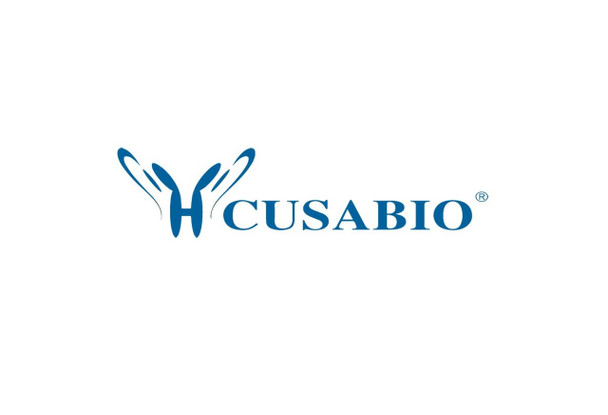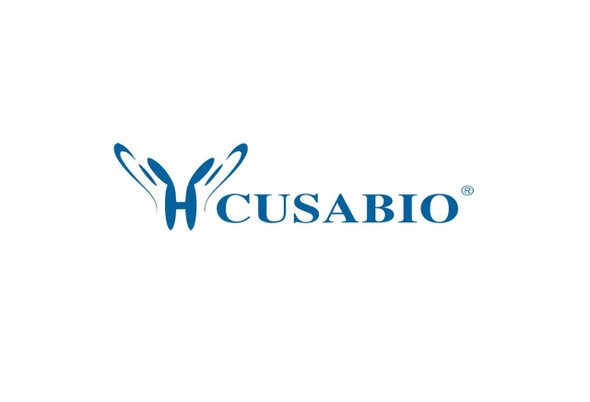Cusabio Human Recombinants
Recombinant Human Transcriptional enhancer factor TEF-5 (TEAD3), partial | CSB-EP860344HU
- SKU:
- CSB-EP860344HU
- Availability:
- 3 - 7 Working Days
Description
Recombinant Human Transcriptional enhancer factor TEF-5 (TEAD3), partial | CSB-EP860344HU | Cusabio
Alternative Name(s): DTEF-1TEA domain family member 3 ;TEAD-3
Gene Names: TEAD3
Research Areas: Transcription
Organism: Homo sapiens (Human)
AA Sequence: MNLDQVSKDKALQSMASMSSAQIVSASVLQNKFSPPSPLPQAVFSTSSRFWSSPPLLGQQPGPSQDIKPFAQPAYPIQPPLPPTLSSYEPLAPLPSAAASVPVWQDRTIASSRLRLLEYSAFMEVQRDPDTYSKHLFVHIGQTNPAFSDPPLEAVDVRQIYDKFPEKKGGLKELYEKGPPNAFFLVKFWADLNSTIQEGPGAFYGVSSQYSSADSMTISVSTKVCSFGKQVVEKVETEYARLENGRFVYRIHRSPMCEYMINFIHKLKHLPEKYMMNSVLENFTILQVVTSRDSQETLLVIAFVFEVSTSEHGAQHHVYKLVKD
Source: E.coli
Tag Info: N-terminal 6xHis-SUMO-tagged
Expression Region: 112-435aa
Sequence Info: Partial
MW: 52.3 kDa
Purity: Greater than 90% as determined by SDS-PAGE.
Relevance: Transcription factor which plays a key role in the Hippo signaling pathway, a pathway involved in organ size control and tumor suppression by restricting proliferation and promoting apoptosis. The core of this pathway is composed of a kinase cascade wherein MST1/MST2, in complex with its regulatory protein SAV1, phosphorylates and activates LATS1/2 in complex with its regulatory protein MOB1, which in turn phosphorylates and inactivates YAP1 oncoprotein and WWTR1/TAZ. Acts by mediating gene expression of YAP1 and WWTR1/TAZ, thereby regulating cell proliferation, migration and epithelial mesenchymal transition (T) induction. Binds to multiple functional elents of the human chorionic somatomammotropin-B gene enhancer.
Reference: Human TEF-5 is preferentially expressed in placenta and binds to multiple functional elements of the human chorionic somatomammotropin-B gene enhancer.Jacquemin P., Martial J.A., Davidson I.J. Biol. Chem. 272:12928-12937(1997)
Storage: The shelf life is related to many factors, storage state, buffer ingredients, storage temperature and the stability of the protein itself. Generally, the shelf life of liquid form is 6 months at -20?/-80?. The shelf life of lyophilized form is 12 months at -20?/-80?.
Notes: Repeated freezing and thawing is not recommended. Store working aliquots at 4? for up to one week.
Function: Transcription factor which plays a key role in the Hippo signaling pathway, a pathway involved in organ size control and tumor suppression by restricting proliferation and promoting apoptosis. The core of this pathway is composed of a kinase cascade wherein MST1/MST2, in complex with its regulatory protein SAV1, phosphorylates and activates LATS1/2 in complex with its regulatory protein MOB1, which in turn phosphorylates and inactivates YAP1 oncoprotein and WWTR1/TAZ. Acts by mediating gene expression of YAP1 and WWTR1/TAZ, thereby regulating cell proliferation, migration and epithelial mesenchymal transition (EMT) induction. Binds to multiple functional elements of the human chorionic somatomammotropin-B gene enhancer.
Involvement in disease:
Subcellular Location: Nucleus
Protein Families:
Tissue Specificity: Preferentially expressed in the placenta.
Paythway: Hipposignalingpathway
Form: Liquid or Lyophilized powder
Buffer: If the delivery form is liquid, the default storage buffer is Tris/PBS-based buffer, 5%-50% glycerol. If the delivery form is lyophilized powder, the buffer before lyophilization is Tris/PBS-based buffer, 6% Trehalose, pH 8.0.
Reconstitution: We recommend that this vial be briefly centrifuged prior to opening to bring the contents to the bottom. Please reconstitute protein in deionized sterile water to a concentration of 0.1-1.0 mg/mL.We recommend to add 5-50% of glycerol (final concentration) and aliquot for long-term storage at -20?/-80?. Our default final concentration of glycerol is 50%. Customers could use it as reference.
Uniprot ID: Q99594
HGNC Database Link: HGNC
UniGene Database Link: UniGene
KEGG Database Link: KEGG
STRING Database Link: STRING
OMIM Database Link: OMIM









